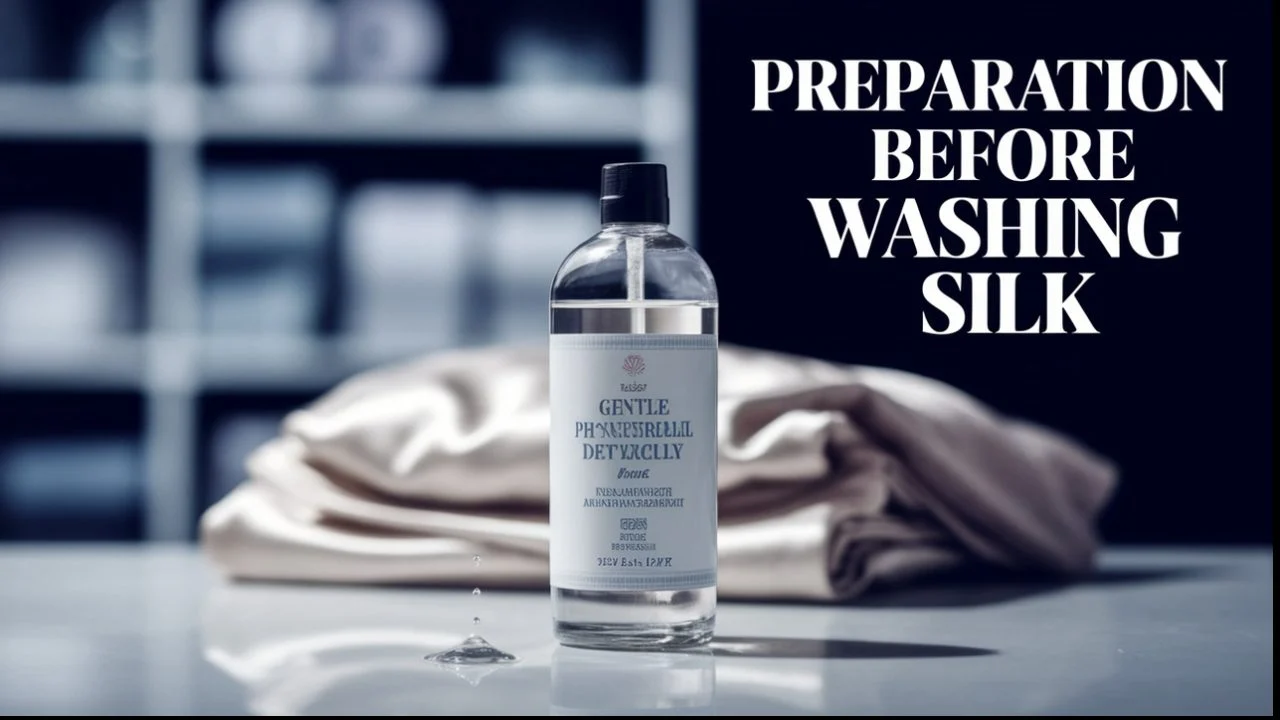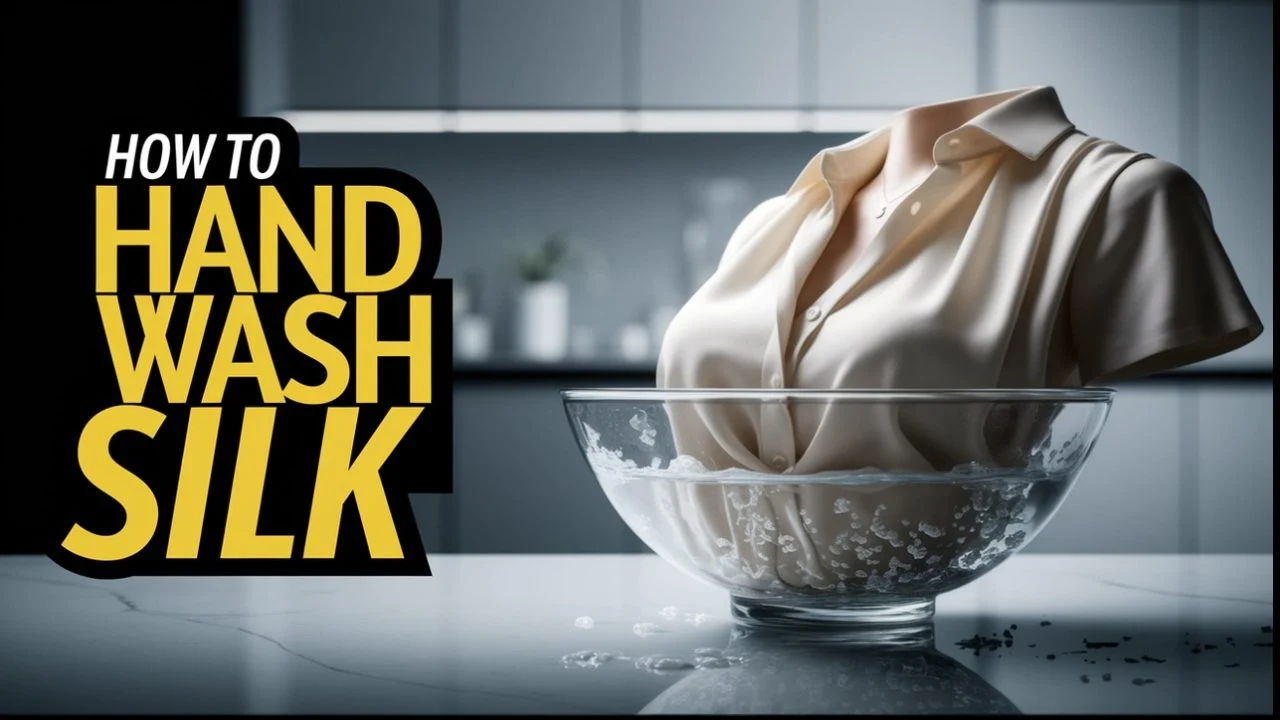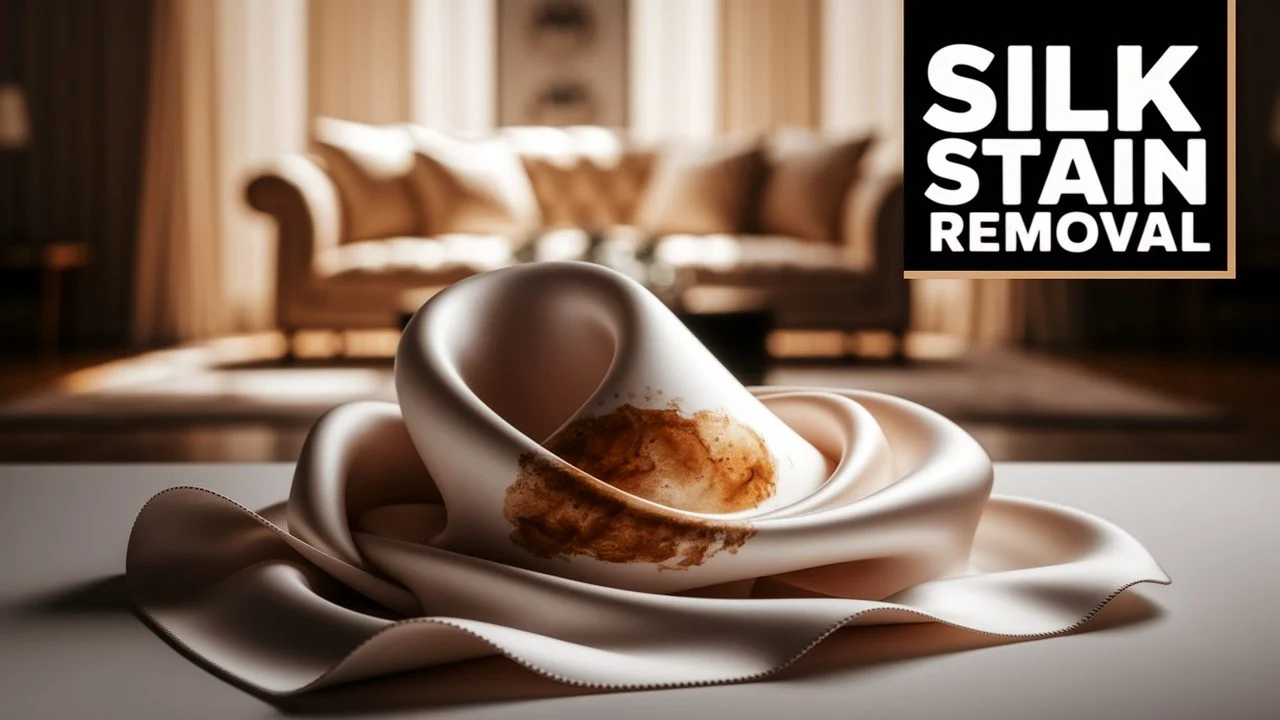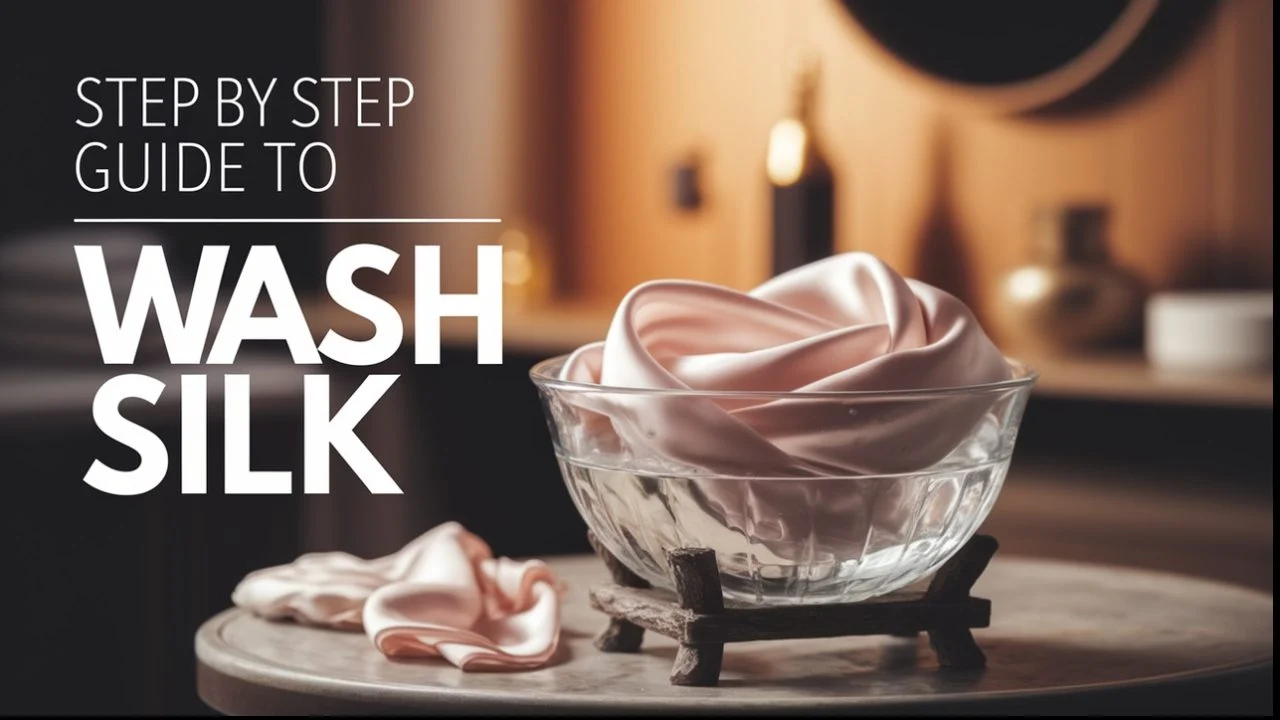How to Wash and Clean Silk: Complete Care & Cleaning Guide
Silk isn’t just a fabric, it’s a luxury that deserves delicate care. If you’ve ever wondered how to Wash and clean Silk without ruining its softness and shine, you’re in the right place. Begin by rinsing your silk garment in cold water using a mild detergent designed for delicate fabrics. Skip bleach and harsh chemicals—they can weaken the silk fibers.
Gently agitate the fabric with your hands or a soft sponge for a few minutes to lift away dirt and impurities. Once clean, rinse thoroughly to remove all traces of soap. A golden rule in learning how to wash silk: never dry it in direct sunlight. Instead, hang it in a shaded area to preserve its natural sheen. With the right care, your silk will stay beautiful, soft, and elegant for years to come. Read on for more expert tips on silk care.
Preparation Before Washing silk

Before jumping completely in to washing silk, you need to do some prep work. This is to make sure your fine washables retain their coloring and charm, while lasting wash after wash. Here’s a look at some of those critical steps.
Gather Necessary Materials
Begin by gathering all the items you plan to wash. You’ll need a gentle, enzyme-free detergent for that-Delicate Wash is perfect for silk, but a mild shampoo will do just as well.
You’ll need a clean basin or sink, lukewarm water, and a clean soft cloth for drying. This way, the entire process is much more enjoyable and stress-free.
Check Care Labels
Second, checking the care labels on each of your silk pieces is important. These labels tell you exactly how to wash them, saving you from laundry disasters.
Depending on the type of silk you have, some silk fabrics will need to be hand washed, while others can be washed in the machine on a delicate cycle. Knowing and taking care of these specifics saves your silk investment.
Test for Colorfastness
Colorfastness testing is absolutely indispensable. Choose an out-of-sight section of the fabric, moisten with cool water, and check to see if any dye runs.
Use this quick test to determine whether you need to wash separately or sort by color. During washing, any time spent soaking should be no longer than 30 minutes to avoid fading or loss of color.
How to Hand Wash Silk: Step-by-Step Guide

Hand washing is the safest, most effective way to clean silk and protect its delicate fibers. This serves as a good reminder that protecting your delicate fabric from the harsh cleaning duties of machines will help keep it looking great.
Here’s a step-by-step guide to getting started.
Create a Gentle Cleaning Solution
Begin by dissolving some silk-friendly detergent into cool water, about 80°F. Even a mild, enzyme-free detergent, such as Delicate Wash, does the trick.
Soak your item in cool water for 15 to 30 minutes. This unique process deeply cleans while remaining tough on dirt but gentle on the carpet fibers.
Treat Stains Before Washing
Before you wash, pay attention to stains. The best part is, adding a bit of detergent directly on the stain is surprisingly effective.
This special pre-treatment makes it so the fabric releases dirt more easily, making sure your silk remains in its bright and colorful state.
Fill the Basin with Water
If using water, fill your basin with cool water. That high temperature helps preserve the silk fiber.
Always make sure the water is clear and mild to prevent the silk fibers from becoming damaged.
Wash Silk Gently
When it is indeed time to wash, treat your silk gently. Don’t scrub, but rather gently agitate the water with your hands.
Keep in mind, wet silk is only 80% the strength of when dry, so don’t apply too much force.
Rinse Thoroughly
After cleaning, rinse hands well under cool running water until all soap has been rinsed away.
This step is especially important in order to prevent any leftover film that may cause yellowing.
How to Wash Silk in a Machine

We’ve machine washed silk plenty of times with great success-just be sure to follow these key steps. Here’s our guide to making sure all your dainty, filmy, sheer fabrics look great and last a long time.
Use a Mesh Laundry Bag
A mesh lingerie bag is the most important tool to have in your arsenal for machine washing silk. This magic machine-washing bag performs as a silk armor, helping to keep your silk snag-free and away from other machine-washables.
All you have to do is drop your silk item into the bag before putting it in the washer. This added insurance does much to help keep your silk looking its best.
Select the Right Detergent
Selecting a mild, non-biological detergent goes a long way. For machine-washing, I strongly recommend washing with a gentle wash like Persil Silk & Wool.
This special type of detergent not only deep-cleans without being tough on the fibers. Follow the label directions for the proper dosage to get the best results!
Choose a Delicate Cycle
Your machine should at the very least have a delicate cycle. This machine wash setting washes fabrics supremely gently-ideal for silk, of course!
By minimizing agitation, it prevents damage to the fabric and maintains its integrity. For optimal care of your printed masks, be sure to set your machine to wash at 30° – 40° Celsius.
Set Ideal Water Temperature
Use moderately warm water. Lukewarm water is best to dissolve soap quickly without damaging the silk.
Avoid Overloading the Machine
Overloading the machine will create unnecessary friction between garments, potentially ruining sensitive fabrics.
To avoid harming your silk, keep the machine wash load as light as possible. One or two pieces at a time makes sure the pieces have space to tumble around and get clean.
Drying Methods for Silk

Using the right drying methods can ensure that your silk pieces will not lose their exquisite quality and will stand the test of time. Each method offers specific advantages to protect silk’s fragile fibers and shine. Here’s how to go about it the right way.
Air Drying Techniques
Air drying silk is the safest option. After washing your silk, spread your item out face down on a clean, dry towel. Roll the towel up with the silk inside to dry without twisting or wringing.
Then place the silk flat on another dry towel or a drying rack in a uniform-stitching apartment, ensuring good air circulation. This technique preserves the natural shape of the fabric and avoids further damage that could result from the high temperatures of dryers.
Avoid Direct Sunlight
When drying silk, do so in an area free from direct sunlight. Sunlight is damaging, as the colors become faded and the fibers themselves are weakened with exposure.
Instead, opt for a ventilated, shaded area away from direct sunlight and heat sources. If drying it inside, put it near a fan to help circulate air and evaporate moisture. This will accelerate the drying process without requisitioning the fabric.
Do Not Wring or Twist
Wringing or twisting silk may appear to be a quick method to remove excess water. This approach risks compromising the artwork’s structural integrity.
Always treat silk gently and with care. If you do require to remove excess water, then the best method is to press gently between towels. This preserves the integrity of the fibers, and in turn, your silk stays beautiful and soft.
Post-Wash Silk Care

Proper post-wash silk care is important to keeping silk at its most beautiful and ensuring its longevity. Proper storage, wrinkle removal, and understanding the effects of frequent washing all play a significant role in preserving your silk pieces.
Proper Storage Solutions
As with any textile, proper silk storage is essential. Keep your silk protected from dust and light by storing it in breathable garment bags or cotton pillowcases. Don’t use plastic, which can trap moisture and cause mildew.
Hanging silk garments and accessories is usually the safest route, just be sure to use padded hangers to avoid stretching. If folding must be done, make sure to tuck tissue paper in between layers to prevent creasing.
When you put a silk blouse away for storage, fold with care. Store it safely. Lay it flat with layers of tissue paper to protect it when it’s not being worn.
Techniques for Removing Wrinkles
Since silk creases very easily, you may want to approach this one lightly. Hanging the piece in a hot, steamy bathroom will help relax the fibers with steam only, no direct heat applied.
Or, if indeed necessary, use a low-heat iron with a damp cloth barrier between the silk and the iron. For example, if you’re working with a wrinkled silk scarf, you can lightly steam it while hanging to remove wrinkles.
As with any textile, always test a small area first to avoid irreparable damage.
Long-Term Effects of Frequent Washing
Washing it too often leads to loss of silk’s sheen and makes its fibers brittle. Try to avoid washing silk unless absolutely needed, maybe after every 3-4 wears.
When you wash, use mild detergents and cold water to reduce the action. Taking care of your silks this way will keep your beloved silk pieces colorful and healthy for years to come.
Stain Removal: How to Clean Silk Safely

Silk is the most luxurious beautiful fabric, but when it comes to cleaning, it can be the most dastardly. Being prepared with the best techniques for stain removal can prevent your silk goods from becoming dull or damaged. Here are the key steps to proper stain treatment and removal.
Pre-Treatment Options
Regardless of the stain removal technique you’re considering, the general rule of thumb is to always work quickly. Work to remove the stain. Apply gentle pressure while you blot, encouraging the cloth to absorb excess liquid.
Don’t rub, because you’ll only make the stain worse by spreading it. Ideally, you can test with a silk-safe detergent on a small, hidden area of the fabric beforehand. This will make sure that your method of choice won’t damage the silk fabric.
Common Stains and Solutions
The method you use to remove a stain depends on the type of stain. For instance, a wine stain can be removed with a solution of water and white vinegar. Rub this mixture onto the stain with a soft cloth, lightly rubbing until you notice the stain starts to disappear.
To remove an oil stain, use cornstarch by sprinkling some on the stained area. Apply cornstarch to the silk stain, letting it sit for several hours before brushing it off. Whatever stain removal technique you choose, always make sure to rinse the fabric well with cold water afterward.
When to Seek Professional Help
In some cases, the smartest choice is to let the pros handle it. When all else fails and you come across an impossible stain, look to the artisan silk cleaning specialists.
This will be particularly crucial with objects of high value. They know they have the right tools and knowledge to treat your fabric without causing damage.
Understanding Different Silk Types
Silk is a gorgeous, soft textile, but there are different types of silk that all need different care. Understanding these differences is key to keeping your silks beautiful and lasting for years to come.
Care for Mulberry Silk vs. Wild Silk
Mulberry silk, the most popular silk type, is produced by silkworms that exclusively eat mulberry leaves. This luxurious silk has an exquisitely soft, smooth hand that makes it the preferred fabric for elegant clothing.
Whether you’re washing mulberry silk or any other silk fabric, gentle handling is key. Hand-wash in cold water and a gentle detergent. A short soak of 5 to 10 minutes, followed by a gentle rinse, works magic.
By comparison, wild silk, which comes from silkworms that eat a wider range of botanicals, has a much more textured hand. This type is different in that it requires more attention. It frequently requires dry cleaning rather than washing with water to maintain its special qualities. Different fabrics need different approaches. If you’re handling multiple delicate materials, you might also want to read our article on how to wash cashmere the right way.
Differences in Washing Techniques
As you can see, these are all other types of silk and the washing methods are completely different! When it comes to mulberry silk, we recommend hand washing.
Do not wring the fabric out, or you will risk damaging it. Don’t hang it up to dry, as the weight can stretch the silk out.
Wild silk, on the other hand, responds more positively to dry cleaning, retaining its natural oils and texture in the process. Be sure to always check the care label, since some silks can differ greatly according to their dye and finish.
Special Considerations for Raw Silk
This is in contrast to raw silk, which is currently unique in its warp-yarn, nubby texture requiring a bespoke washing protocol. This lesser-known type still tends to retain sericin, a natural gum that lends structure.
While hand washing in cold water with a silk friendly detergent is ideal, after washing, hang it to dry out of direct sunlight to avoid any fading.
Benefits of Dry Cleaning Silk
When caring for silk, using dry cleaning is the best option to ensure that you are protecting that fabric in its natural beauty and integrity. Dry cleaning relies on specialized solvents instead of water, making it best suited for finer silk articles. This process eliminates the risk of damage caused by water, which often results in fading or warping.
When to Choose Dry Cleaning
Alternatively, you should choose dry cleaning for heavily soiled silk pieces or items with complex embellishments. For example, a silk blouse with intricate beading is a great candidate for this process. If your silk garment has a care label recommending dry cleaning, it’s best to follow that guidance to maintain its quality.
Advantages Over Home Washing
Dry cleaning silk provides many benefits compared to washing at home. It gently raises stains without the danger of causing shrinkage or abrasion to the material. Imagine your favorite silk scarf with a big red wine stain on it.
A professional dry cleaner is equipped to treat it safely, but a home wash won’t do the trick. Only with professional care can your silk be brought back to life, even better than what home washing is able to provide.
Finding a Reliable Dry Cleaner
To locate a good dry cleaner, seek personal referrals from friends or search online reviews. When choosing a silk dry cleaner, look for one that specializes in cleaning silk. A professional dry cleaner examines your clothes first before cleaning.
That way you know they’re using the proper, safest methods for your particular items.
Additional Tips for Silk Care
It’s not just washing silk – it’s caring for silk. You need to be aware of the fabric’s fragile quality and how you can protect it to maintain its elegance. Here are some key things you need to know to keep your silk happy and beautiful.
Expert Insights on Maintaining Quality
With silk garments, you want to keep this luxurious material soft and supple, so always wash silk in cold water, below 30°F if possible. Choose a mild detergent made for fine fabrics.
The best care is hand washing. If you do decide to dampen the garment, swish the silk around delicately in the water without twisting or wringing. Silk is delicate, and this method protects its softness while preventing other damage.
If you must machine wash, always opt for the delicate cycle. To keep your silk extra safe, put your piece into a mesh bag.
Best Practices for Color Preservation
Color fading is one of the biggest fears with silk. To prevent this, always wash the silk fabric inside out. This technique protects the top pigment layer from rubbing against one another.
Using a color-safe detergent will prevent dulling. Place your silk flat on a clean towel to dry. Always protect it from direct sunlight, since extended exposure to sunlight will eventually bleach silk colors.
Common Mistakes to Avoid
The biggest misconception surrounds treating all fabrics the same, creating preventable mistakes. Limit or avoid fabric softeners, which can damage the lovely feel of silk.
Do not ever hang silk while it is wet; the pull of gravity can permanently stretch and distort your silk. Don’t iron silk-iron on a low heat setting with a cloth layered between fabric and iron.
Conclusion
When properly cared for, the beauty of silk is magnified and its longevity maintained. Now you know how to wash silk, whether by hand or machine, the best way to dry silk, and how to treat stains on silk. Every single step counts. Gentle washing prevents silk from getting damaged and losing its luster and texture. As long as you take the proper precautions, your silk garments will remain beautiful for years to come.
More than a fabric, silk is an experience that brings sophistication to your closet. When you go the extra mile to care for it, you show just how valuable that thing of beauty truly is. Now that you know how to wash silk, get out there and use these tips. Invite the happiness that comes from wearing your silk, confident that it looks amazing and makes you feel incredible. So let’s do what we can to keep that silk shiny!
Frequently Asked Questions
How often should I wash my silk items?
Wash silk pieces as little as possible. Opt to wash them at least every 5-7 wears or when they look dirty. This way there’s no damage and they keep their luxurious soft feel!
Can I use regular detergent for silk?
No, wash silk with a pH-neutral detergent. Regular detergents can have abrasive chemicals that will ruin the quality of the fibers and the hue itself.
Is it safe to machine wash silk?
Yes, but it needs to be safe according to the care label. Opt for a gentle wash cycle and a mesh laundry bag to minimize friction and wear on the silk fabric.
How should I dry silk after washing?
To air dry silk, lay it flat on a clean, dry towel, away from direct sunlight. Do not hang, because this will pull the fabric out of shape.
What should I do if I get a stain on my silk?
3-Blot the stain gently Blot the area with a clean cloth and cold water. In the case of old or particularly stubborn stains, pre-treat with a silk-friendly stain remover.
Is dry cleaning necessary for all silk garments?
Not true, not really. The good news is that most silk pieces can be easily hand washed right in your own home. Especially delicate pieces, those needing extra love, or with embellishments are better served by the pros.
How can I prevent wrinkles in silk?
Keep silk in a flat format or rolled up, don’t fold it. If needed, go over with a low-heat iron. Protect the silk. Place a cloth or towel between the iron and the silk to protect the fabric from direct contact.
Can silk be washed at home?
Yes, silk can be hand-washed or machine-washed using cold water and a mild detergent
What detergent is best for silk?
Use a gentle, enzyme-free detergent designed for delicate fabrics. Avoid bleach and fabric softeners.



